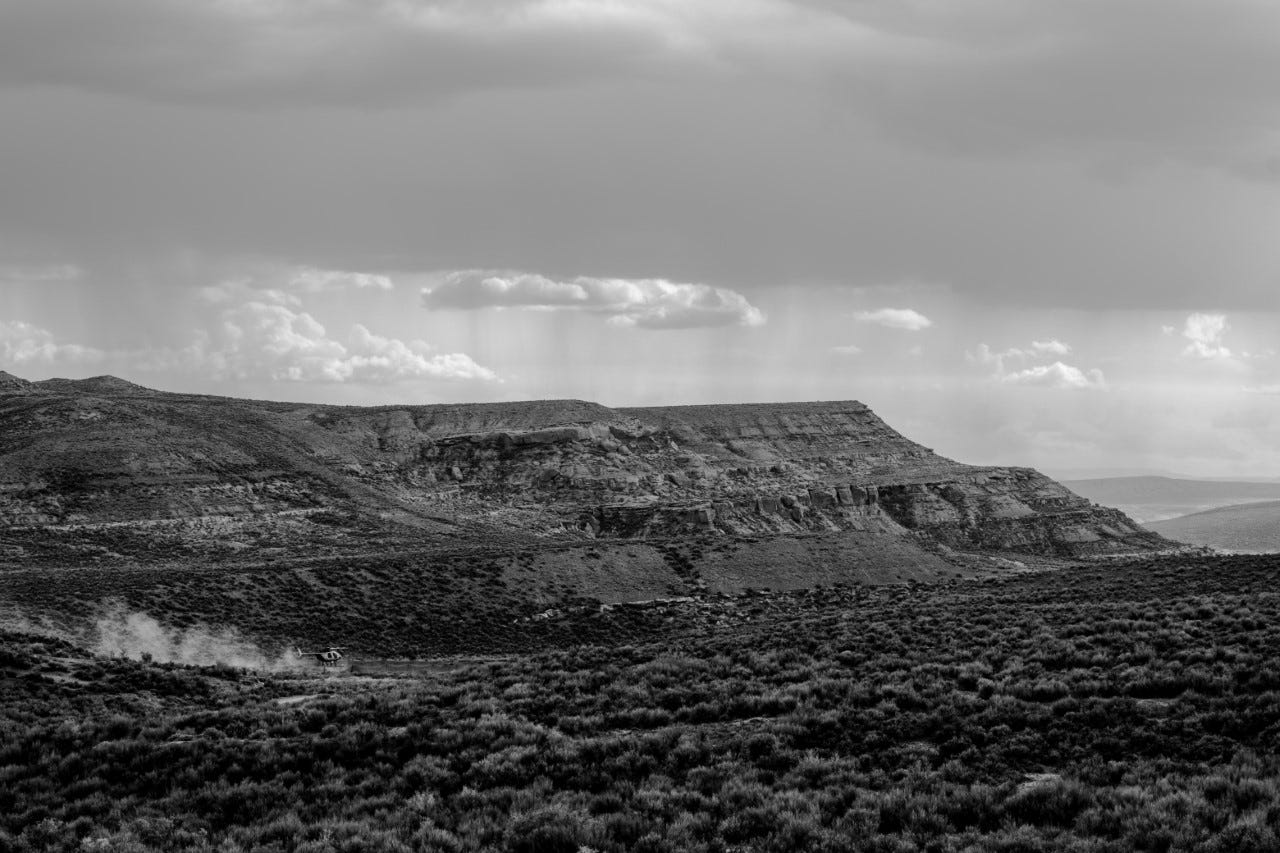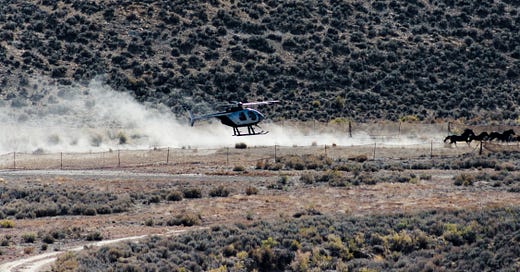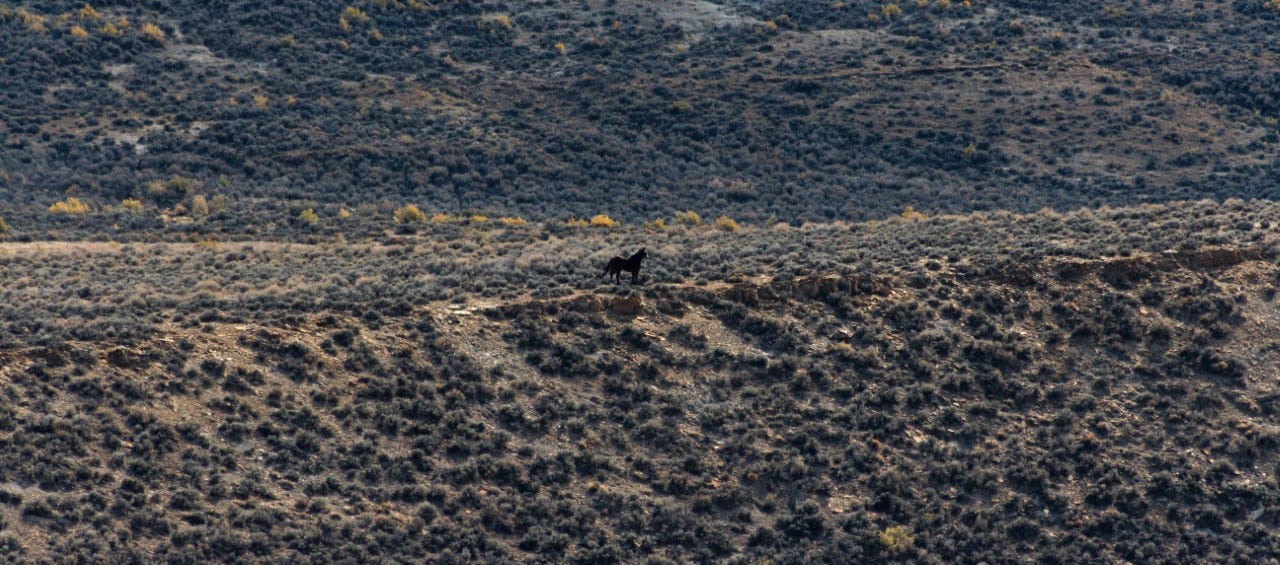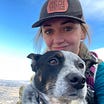The wild horse balancing act
In the coming months, Wyoming will see 3,500 wild horses removed from the range in an effort to maintain a balanced ecosystem. The Laramie Reporter’s Erin Krieger witnessed one roundup firsthand.

The long day of a wild horse roundup observer involves an early wakeup, long dirt road drives on public lands and hours of hurry-up-and-wait. But attending one day’s roundup is a fleeting moment in comparison to the long-haul effort necessary to re-appropriate feral horse and burro populations.
The Bureau of Land Management has been rounding up wild horses since the 1971 passage of the Wild Free-Roaming Horse and Burro Act. The Act, and the BLM, aim to re-establish ecosystem balance on public lands when that balance is threatened by an excess of horses.
Horses successfully removed from gathers will either be placed into private ownership through the agency’s adoption program, be returned to the range following fertility treatment, or remain in BLM jurisdiction in off-range long-term holding facilities.
This year, the BLM hopes to round up over 4,300 wild horses from the Adobe Town, Salt Wells Creek, Great Divide Basin, Little Colorado and White Mountain Herd Management Areas in the coming months. They’ll keep rounding up horses as long as the weather cooperates.
“Each (management area) has an Animal Management Level,” BLM Public Affairs Specialist Brad Purdy said. “The Horse and Burro Act states that any excess animals, or any number of animals over that AML, shall be removed. To be over AML and to not remove horses would be a violation of that act.”
The Great Divide Basin management area— a checkerboard of public and private lands — was home to approximately 1,539 wild horses prior to the commencement of this fall’s roundups. But the designated management level for the basin is only 415-600 horses. As far as the BLM is concerned, that means a majority of the horses in the basin need to be relocated, or else the local environment could suffer.
“An overabundance of any herbivore — be it livestock, elk populations or wild horses — puts substantial strain on an ecosystem,” said Kevin Wilcox, a vegetation ecologist with the University of Wyoming. “However, when the numbers of herbivores become very high, plants are unable to replenish their reserves before getting eaten again. This negatively impacts the amount of quality forage available, as well as leads to issues such as soil erosion.”
At least 476 horses have been gathered so far in the Great Divide Basin — in just two weeks of daily operations.
Horses, cattle, sheep and elk compete for resources.
“Horses have mouths that are different from cattle and other ungulates,” Wilcox said. “Whereas cattle have lower incisors only and leave much of the grass stem intact— horses have both upper and lower incisors resulting in their clipping plants very close to ground level or even uprooting plants. This severely limits the plant’s ability to regrow since this often removes the meristem (where many grasses regrow from).”
In sagebrush ecosystems in the Great Basin, one study observed that the presence of feral horses typically decreased vegetative cover and shrub abundance, increased invasive species, and decreased biodiversity.
The gatherings are conducted by helicopter, with the feral horses being driven into v-shaped camouflaged fencing for their eventual corral and capture. But these “traps” are not always one-step-ahead of these animals of prey.
“I don't think anybody who knows horses can tell you that you can force a horse to do anything,” Purdy said. “We use pressure by helicopter to encourage horses to move towards the trap.”
To Purdy’s point, the early October roundup saw a small band of wild horses — dubbed the ‘Defiant Five’ by horse advocate Lynn Hanson — evade the relentless pursuit of the contractor helicopter, earning “temporary freedom,” according to Wyofile’s Angus Thuermer.
These horse gathers are not without critics, but the operations are open to members of the public wishing to observe.
“These horses are federally protected on public lands; people should be able to come out and watch these gathers,” Purdy said. “There’s alot of misinformation out there — accusations of animal cruelty and that the BLM is cruel to these animals. I have been to gather after gather and I have never seen any evidence of that.”
According to Purdy, a veterinarian is present through each step of this process — from the roundup itself to the holding corral and lastly to the long-term holding facilities — to evaluate the condition of all incoming horses. Humane treatment of animals is an often-addressed concept across BLM literature.
“The BLM has the Comprehensive Animal Welfare Program and that guides our actions on how we deal with these horses,” Purdy said. “We follow that document to the letter.”
According to the BLM, this program directs the federal agency’s activities, catering to the physical and psychological well-being of managed animals on the range during gatherings, at off-range facilities and in private care post-adoption.
The document demands protection for these horses — from the agency but also from all contributing partners and contractors.
“I’m not going to act like terrible things don’t happen to horses during gathers (but) those occurrences are rare,” Purdy said. “We look at what happened and why it happened. Is there something we could have done or is this a wild animal being a wild animal?”
Of the horses gathered, some will re-enter the range following veterinary and farrier work including fertility treatments by the means of IUD or PZP-22 administration or castration. Horses are to be released back into the management areas at a ratio of one mare to one stallion.
The horses permanently removed will be held in long-term holding facilities in Rock Springs and Wheatland until adoption or eventual placement in an ecosanctuary.







Great article Erin!
Remove the Cattle, Sheep and other Animals raised for Human Food and then see if there's NO ROOM for Horses.